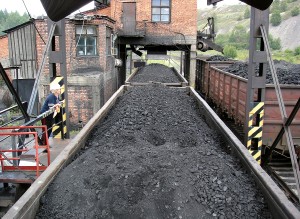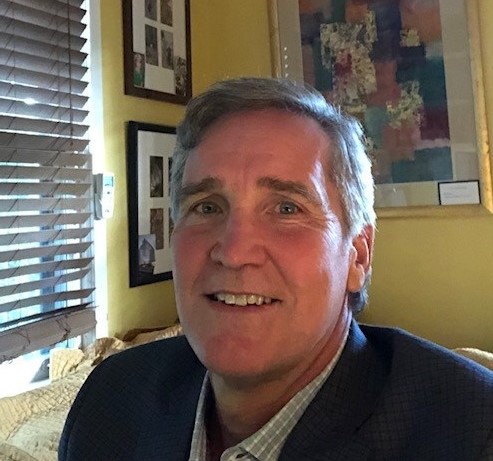The Florida Legislature made national headlines late last year when it effectively curtailed one-way attorney fees and greatly limited plaintiffs’ fee multipliers in claims litigation. Property insurers celebrated the end to practices that they said had led to runaway legal costs and had pushed some carriers into insolvency.
But several other states continue to have similar laws on the books, designed to discourage insurers from unnecessarily denying or delaying claims or fighting against insureds that may not have the financial resources to slog through years of litigation.
“The purpose is to recognize that the insureds may be at a disadvantage in dealing with an insurance company that denies their claim,” said Patrick McGinley, professor of law at West Virginia University. “These statutes generally encourage or even force settlements.”
West Virginia’s approach goes by a catchy name – the Hayseeds Doctrine. It was established by a 1986 West Virginia Supreme Court decision in a suit known as Hayseeds vs. State Farm Fire & Casualty Insurance Co. Several court decisions since then have reinforced the doctrine, allowing juries to add on extra damages and attorney fees when insureds prevail in court. In 2013, a federal court ordered Nationwide Mutual Fire Insurance to pay $6,100 in economic  damages under Hayseeds, but almost $60,000 in attorney fees to homeowners after their dog bit someone and Natiowide denied the claim. In a 2019 case, a state court extended the doctrine to apply to insurance brokers, according to news reports and West Virginia attorneys.
damages under Hayseeds, but almost $60,000 in attorney fees to homeowners after their dog bit someone and Natiowide denied the claim. In a 2019 case, a state court extended the doctrine to apply to insurance brokers, according to news reports and West Virginia attorneys.
The Hayseeds Doctrine was reinforced – but with limits – last week when the U.S. 4th Circuit Court of Appeals ruled in favor of a coal mining company. The court overturned a lower court decision and found that Federal Insurance Co., a Chubb unit, owes Ramaco Resources more than $7 million. The jury had awarded the multi-million figure, but the trial court judge knocked it down to about $1 million.
In upholding the jury’s $7 million award, the appeals court has now opened the door to the possibility that Federal Insurance will have to pay several million more under the Hayseeds Doctrine: The appellate judges agreed with the lower court and ordered a new trial on the extra damages.
“Considering that $7.1 million award, Ramaco ‘substantially prevailed’ against its insurer, so it is entitled to Hayseeds damages,” Circuit Judge Julius Richardson wrote for the panel of judges. “But a Hayseeds award cannot include punitive damages. So the district court did not abuse its discretion in ordering a new trial on Hayseeds damages.”
The case began in Logan County in southwest West Virginia, one of the most-storied coal mining areas in the United States. The county was home to an armed uprising by coal miners in 1921 and the Buffalo Creek disaster in 1972, which killed 125 people when a coal slurry dam collapsed.
In 2018, a hopper inside a coal silo at Ramaco’s processing center collapsed, completely shutting down operations, the court opinion explained. Ramaco immediately filed a claim with Federal Insurance. A engineer hired by Ramaco recommended demolishing the damaged silo and shoring up other silos with steel beams to prevent further collapses.
 Federal denied the claim, contending that the collapse was the result of corrosion, something that was not covered by the business-interruption policy. Ramaco argued that the mishap stemmed from a clog in the conveyer-belt coal line, which built up coal that broke loose, fell, and damaged the equipment, something that was covered by the policy.
Federal denied the claim, contending that the collapse was the result of corrosion, something that was not covered by the business-interruption policy. Ramaco argued that the mishap stemmed from a clog in the conveyer-belt coal line, which built up coal that broke loose, fell, and damaged the equipment, something that was covered by the policy.
Ramaco sued the insurer for several million dollars, alleging breach of contract. A jury found in favor of the coal company and awarded $7.1 million in contract damages, plus $500,000 in interest. The jury also granted $25 million in Hayseeds damages for “aggravation and inconvenience.”
But the trial judge, U.S. District Judge John Copenhaver, erased almost all of the award. The policy covered only a short period of recovery, the time it took Ramaco to set up temporary measures to restore operations, he said. That reduced the payout to just $1.6 million, which meant that the coal company did not substantially prevail in the litigation and thus was not due the additional Hayseeds damages.
The difference in coverage amounts stemmed from the “period of restoration,” as defined by the policy. The trial judge decided that the period ended just three weeks after the hopper collapse, after Ramaco’s temporary measures restored operations. On appeal, the coal company attorneys argued that while operations were restored to some degree, the temporary system was far less efficient, was unable to handle the same volume of material and required routing the coal in a new way. Thar forced the company to process more coal, hire more workers and face greater costs.
To fully reach the same level of profit as the company had enjoyed before the collapse, Ramaco said it had to rebuild part of its line, extending the period of restoration for another four months. Without the extensive rebuilding, workers’ safety would have been at risk, the firm said.
The appellate court agreed with Ramaco.
“The district court used the wrong indicator for the end of the period of restoration,” the 4th Circuit judges said. “The policy’s plain language does not condition the period of restoration solely upon coal throughput.”

The appellate judges quoted from the Federal Insurance policy, which allowed coverage “until your operations are restored, with reasonable speed, to the level which would generate the business income amount that would have existed if no direct physical loss or damage occurred.” Business income is defined by the policy as “net profit or loss.”
So, the 4th Circuit wrote, the policy says “the period ends when operations are restored to the level which would generate the net profits that would have existed if the collapse had not occurred.” A court needs to consider both throughput and costs before it can identify the end of the restoration period, the opinion explained.
The appeals court agreed with the trial judge on one point: Even with the jury’s $7 million award now allowed to stand, the $25 million in Hayseeds is considered excessive and smacks of punitive damages. West Virginia statutes allow punitive damages up to four times the compensatory damages in some cases, but not in insurance claims disputes, which are governed only by Hayseeds, Professor McGinley explained.
Punitive damages are allowed only when fraud or malice by the insurer is proven, he said.
In the Ramaco suit, only one witness, Ramaco’s chief operating officer, Christopher Blanchard, testified that Federal’s denial of the claim had harmed the coal company. He argued that it drove Ramaco to the brink of bankruptcy, which would have put 350 people out of work.
But the trial and appellate judges did not give his testimony as much weight as the jury may have.
“This testimony might support some aggravation and inconvenience damages,” the 4th Circuit’s Richardson wrote. “But it is hard to conceive how the jury extrapolated the $25 million figure from Blanchard’s testimony without deciding that it had to punish Federal.”
Some extra damages may be appropriate, even if the plaintiff in this case is a major corporation, the court said. McGinley noted that in most cases, the Hayseeds Doctrine is designed to protect individual policyholders or homeowners, not well-heeled companies. And Federal Insurance in the Ramaco case argued that point.
But the appeals court pointed out that in the Hayseeds case itself, the plaintiff was, in fact, a corporation.
“Hayseeds thus suggests that a corporation can receive aggravation and inconvenience damages,” the court wrote.
Even without the $25 million in damages, the Ramaco decision underscores the legitimacy of the Hayseeds Doctrine and similar laws in states that still allow the practice, McGinley said.
“You could say the 4th Circuit is reinforcing states’ mechanisms for shifting fees and for leveling the playing field when dealing with an insurance company that has so many resources,” he said. “The insurance company has to think about not only the amount of the claim, but the tack-on, additional financial burden they might face if they don’t prevail.”
Was this article valuable?
Here are more articles you may enjoy.



 Pet Insurance, Agents Gets a Shorter Leash Under Bill DeSantis Signed Into Law
Pet Insurance, Agents Gets a Shorter Leash Under Bill DeSantis Signed Into Law  Global Q1 Commercial Insurance Rates Drop 3%, but US Casualty Bucks the Trend
Global Q1 Commercial Insurance Rates Drop 3%, but US Casualty Bucks the Trend  Group Sues California Department of Insurance Over FAIR Plan Surcharges
Group Sues California Department of Insurance Over FAIR Plan Surcharges  Delta Plane Catches Fire at Orlando Airport in Latest Incident for Airline
Delta Plane Catches Fire at Orlando Airport in Latest Incident for Airline 


